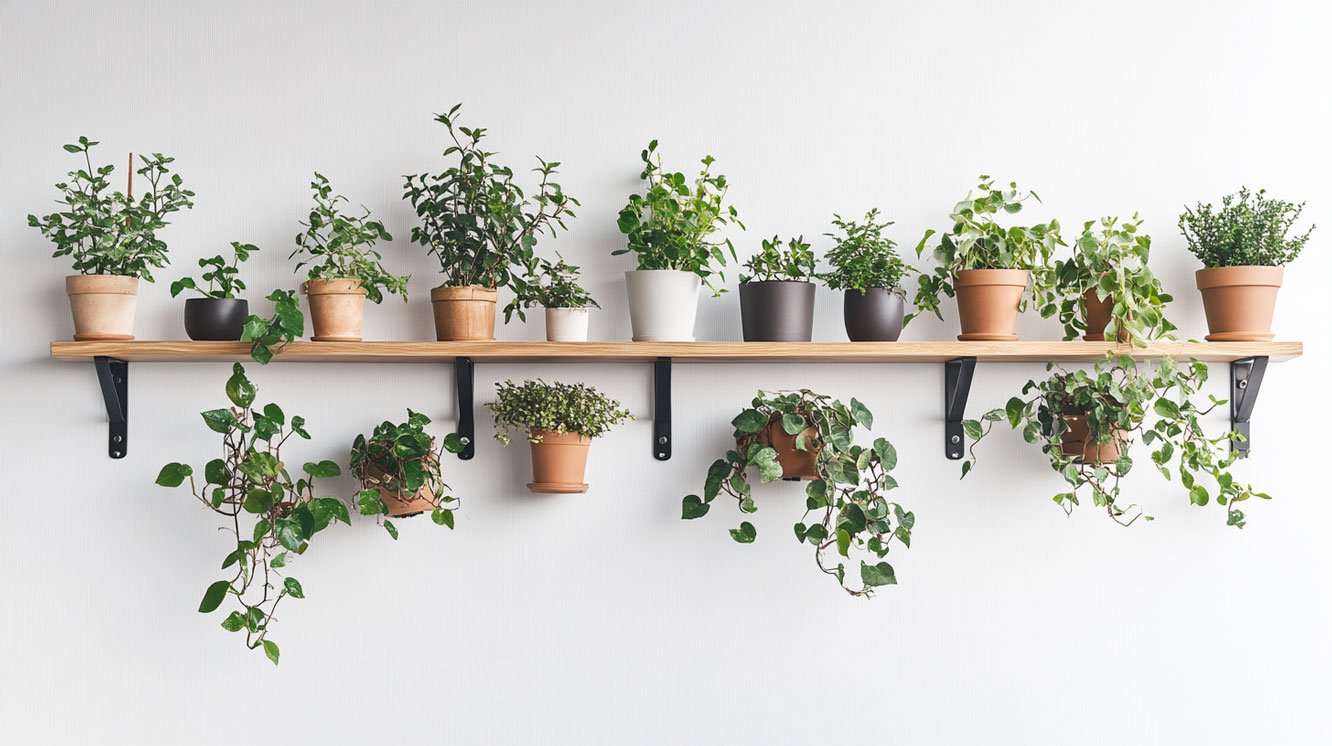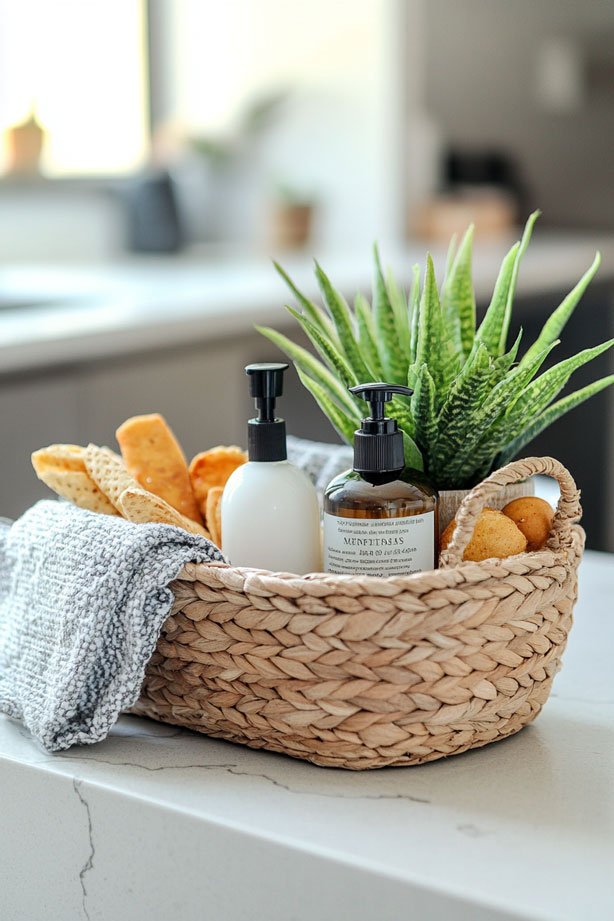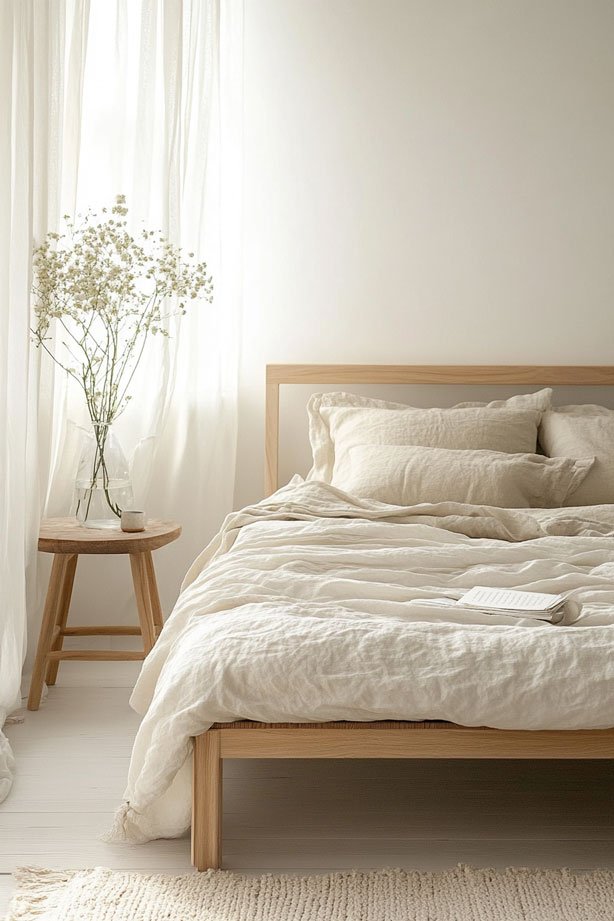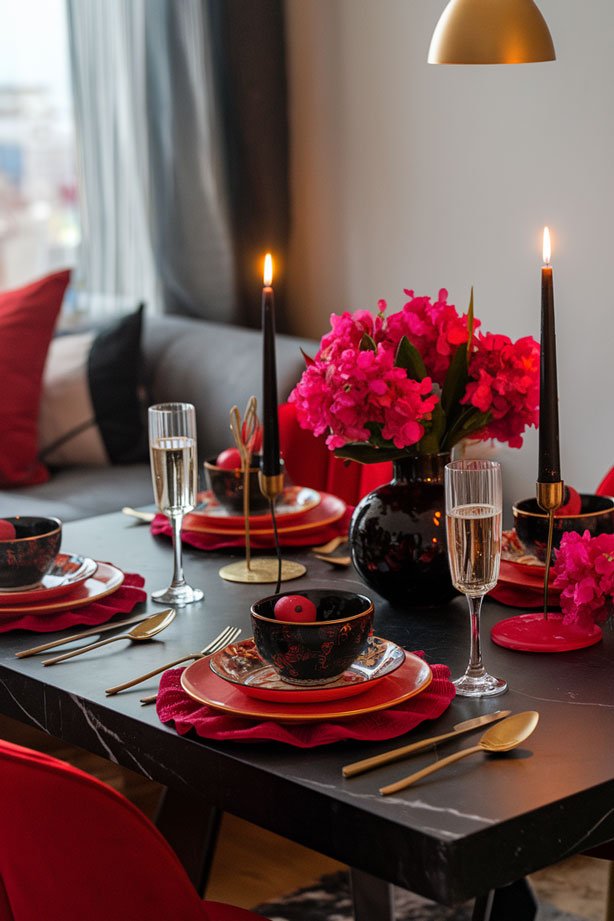
Discovering stylish plant wall hanger ideas can transform your home decor, adding vibrancy and life to any space. Hanging planters not only beautify your home but also allow you to maximize vertical space, making them ideal for both indoor and outdoor settings. In this article, we will explore various creative ideas, essential tips for choosing the right materials, and ways to incorporate hanging planters into your decor for a stunning effect.
What are the Best Ideas for a Hanging Planter?
When considering the best ideas for a hanging planter, think about using a variety of wall mounts and styles. Wall planters can range from macrame plant hangers to sleek metal hooks, each offering a unique aesthetic. Consider creating a vertical garden by incorporating different types of indoor planters, such as cascading plants or vibrant flowers, to add depth and interest. Using baskets or decorative pots can also enhance the overall look, making your hanging plants a focal point in your room.
Another great idea is to mix and match various hanging plant holders with different materials and textures. For instance, combining ceramic pots with wooden hangers can create a rustic feel, while metal holders can bring a modern edge. Additionally, you can hang multiple planters at varying heights to create an eye-catching arrangement. This not only adds dimension but also showcases the beauty of the plants themselves, allowing them to shine in their designated spots.
How to Choose the Right Wall Mount for Your Hanging Planters?

Choosing the right wall mount for your hanging planters is crucial for both style and functionality. Start by assessing the weight of your indoor plants and selecting a wall mount that can support them adequately. Heavy duty wall mounts are essential for larger planters, ensuring they are securely attached and can hold the weight without risk of falling. Additionally, consider the height at which you want to hang your planters, as this will influence the type of wall mount you select.
When it comes to style, there are various options available, from sleek metal brackets to rustic wooden mounts. The wall mount should complement your overall home decor, enhancing the aesthetic appeal of your space. Also, ensure that the hardware used for mounting is suitable for the wall material in your home, whether it’s drywall, brick, or concrete. This attention to detail will guarantee that your hanging planters are both functional and visually pleasing.
What Materials are Ideal for Indoor Plant Hangers?

The ideal materials for indoor plant hangers vary greatly based on personal style and the type of plants you wish to display. Natural materials like cotton rope or jute are excellent choices for macrame plant hangers, adding a bohemian touch to your decor. These materials are sturdy yet flexible, allowing for creative designs that can accommodate various plant pots. Additionally, metal hangers provide a modern, industrial look that works well in contemporary homes.
Wooden holders can also be a fantastic choice, providing warmth and texture to your indoor space. When selecting materials, consider the climate of the room, as well as the type of plants you will be hanging. Some plants thrive in humid environments, while others prefer drier conditions. Therefore, it’s important to choose materials that will work harmoniously with the plants you select, ensuring their health and longevity while enhancing your overall indoor decor.
How to Decorate with Wall Planters for Indoor Plants?

Decorating with wall planters for indoor plants can create a stunning visual impact in any room. Start by selecting a focal wall where your plants can be showcased. Arrange your wall planters in a pattern that suits your style, whether it’s a symmetrical grid or a more organic layout. Mixing different types of hanging planters, such as wall-mounted pots and macrame hangers, can add texture and depth to the decor. Don’t be afraid to play with colors and sizes to create an engaging display.
Incorporate accessories such as decorative lanterns or light fixtures to complement your wall planters. This can enhance the overall ambiance of the room, making it feel more inviting. Additionally, consider using plants with varying foliage and growth habits to create a dynamic arrangement that draws the eye. By thoughtfully decorating with wall planters, you can turn a simple wall into a vibrant green statement piece that reflects your personal style and love for indoor plants.
How to Create a Boho Home Decor with Hanging Planters?

Creating a boho home decor with hanging planters involves embracing a relaxed and eclectic style filled with vibrant colors and textures. Start by incorporating macrame plant hangers into your design. These handmade hangers add a whimsical touch and can hold various types of plants, enhancing the bohemian vibe. Layering different plant pots, such as terracotta and ceramic, can also contribute to the rich, diverse aesthetic typical of boho decor.
Additionally, consider incorporating textiles and patterns that resonate with the bohemian style. Throw pillows, wall hangings, and colorful rugs can complement your hanging planters, creating a cohesive look. By mixing various elements, you can achieve a curated yet effortless feel that defines boho home decor. Remember to include natural elements, such as wood and woven materials, to tie the look together seamlessly.
What are the Key Elements of Boho Home Decor?

The key elements of boho home decor include a mix of textures, vibrant colors, and an emphasis on nature. This style encourages layering different materials, such as textiles, wood, and metal, to create a cozy, inviting atmosphere. Hanging planters are essential in boho decor, as they bring greenery into the space, providing a refreshing contrast to the rich colors and patterns commonly used. Incorporating plants that thrive in various lighting conditions will enhance the overall aesthetic while keeping the decor lively and fresh.
Additionally, eclectic decor items such as vintage furniture, art pieces, and handcrafted accessories can further enhance the bohemian feel. When arranging these elements, focus on creating a balance between chaos and harmony, allowing each piece to shine. This mindset not only showcases your personality but also creates a space that feels both curated and lived-in, perfectly capturing the essence of boho home decor.
How to Use Macrame Plant Hangers for a Bohemian Look?

Using macrame plant hangers is a fantastic way to achieve a bohemian look in your space. These intricate hangers can be easily hung from ceilings or wall mounts, offering an artistic touch that complements various indoor plants. Opt for a variety of designs, from simple knots to more complex patterns, to create visual interest. By incorporating plants of different sizes and textures, you can enhance the boho vibe further while ensuring that your decor remains dynamic and engaging.
Additionally, consider pairing macrame hangers with other bohemian elements, such as colorful textiles or woven baskets. This combination will create a harmonious atmosphere that is both inviting and visually appealing. You can even mix and match different macrame styles to create a playful arrangement, showcasing your creativity. By thoughtfully using macrame plant hangers, you can effortlessly elevate your home decor, embodying the essence of bohemian style.
What Types of Plants Work Best in Hanging Plant Holders?

When selecting plants for hanging plant holders, it’s essential to choose varieties that thrive in elevated positions. Trailing plants, such as pothos, string of pearls, and spider plants, are excellent choices as they naturally cascade downwards, creating a stunning visual effect. These plants are also relatively easy to care for, making them ideal for both beginners and experienced plant enthusiasts alike. Consider the lighting conditions of your space, as some plants prefer bright, indirect light while others thrive in shadier areas.
Another great option for hanging planters is flowering plants like the wandering Jew or certain varieties of begonias, which can add color and vibrancy to your decor. These plants can create a beautiful contrast against the greenery of trailing plants. Additionally, herbs such as basil and mint can be a functional addition to your kitchen, allowing you to enjoy the beauty of plants while also having fresh herbs at hand. By considering the growth habits and care requirements of these plants, you can create a thriving hanging garden in your home.
How to Properly Hang Plants Indoors?

Properly hanging plants indoors involves several crucial steps to ensure your plants thrive and your decor remains stylish. Start by selecting the right location, taking into consideration factors like light exposure and accessibility for watering. Once you’ve found the ideal spot, determine the best height for your hanging planters, ensuring they are visible yet not obstructing walkways. The height should also allow for adequate growth, as many plants will extend or cascade over time.
Next, choose suitable hooks or wall mounts for your hanging planters. Heavy duty wall hooks are ideal for larger pots, providing the necessary support to keep them secure. Make sure to install the hooks or brackets into studs, if possible, to ensure stability. If you’re using drywall anchors, select those that are rated for the weight of your plants. This attention to detail will help ensure that your indoor plants are safely hung and can flourish in their designated spaces.
What is the Best Height for Hanging Planters?

The best height for hanging planters typically depends on the type of plants and the overall design of your space. As a general rule, the bottom of your hanging planters should be approximately eye level or slightly below, allowing you to admire the plants without straining to see them. For taller plants or cascading varieties, consider hanging them higher to allow for their natural growth patterns, ensuring they have enough space to flourish without interference.
Additionally, when arranging multiple planters, vary the heights to create visual interest and depth in your decor. This can be achieved by hanging some planters at eye level while allowing others to hang lower or higher, depending on the plants’ growth habits. By thoughtfully considering the height of your hanging planters, you can create a dynamic and engaging display that enhances the beauty of your indoor plants while ensuring they receive the proper care.
Which Hooks are Suitable for Heavy Duty Wall Planters?

When selecting hooks for heavy duty wall planters, it’s essential to choose options that can adequately support the weight of your plants and pots. Look for sturdy materials such as stainless steel or wrought iron, which provide durability and strength. Heavy duty wall hooks are specifically designed for this purpose, ensuring that your hanging planters are secure and stable. Additionally, consider the design of the hook; those with a wider base can distribute weight more evenly, reducing the risk of damage to the wall or the hook itself.
Another factor to consider is the installation method. Ensure that you are anchoring the hooks into wall studs, as this provides the strongest support. If you must use wall anchors, opt for those rated for heavy loads. This careful selection will ensure that your heavy duty wall planters remain securely hung, allowing you to enjoy the beauty of your indoor plants without concern for their safety or stability.
How to Ensure Your Hanging Planters are Secure?
Ensuring your hanging planters are secure involves a few essential steps to prevent accidents or damage. Begin by using quality hardware, such as heavy duty hooks or brackets, that are specifically designed for the weight of your planters. Be sure to install the hooks into wall studs whenever possible, as this provides the most reliable support. If you’re using wall anchors, make sure they are rated for the weight of your hanging planters, as this will ensure they hold up over time.
Additionally, regularly check the condition of your hooks and planters to ensure they remain secure. Look for signs of wear or damage, such as rust on metal hooks or fraying on macrame hangers. If you notice any issues, replace the hardware or rehang your planters as needed. By taking these precautions, you can confidently enjoy your beautiful hanging planters, knowing they are safely and securely displayed in your home.
What are Creative Outdoor Hanging Planter Ideas?

Creative outdoor hanging planter ideas can transform your outdoor space into a lush, vibrant oasis. Consider using a mix of hanging planters at different heights to create a visually engaging vertical garden. Incorporating colorful flower pots, cascading vines, and even edible plants can add depth and interest to your outdoor decor. Moreover, using unique materials like repurposed containers or decorative baskets can elevate the style of your hanging planters, making them stand out in your garden or patio.
Another idea is to create a themed outdoor hanging garden. For instance, you can focus on herbs for a culinary garden that not only looks great but also provides fresh ingredients for your meals. Alternatively, you might choose a color palette that complements your outdoor furniture or landscaping to create a cohesive look. By experimenting with various plants and arrangements, you can develop a stunning outdoor display that showcases your creativity and love for gardening.
How to Choose the Right Location for Outdoor Hanging Planters?

Choosing the right location for outdoor hanging planters is crucial for the health of your plants and the aesthetic appeal of your outdoor space. Start by assessing the sunlight conditions in your garden or patio. Some plants thrive in full sun, while others prefer partial shade or filtered light. Select a location that corresponds to the light requirements of your hanging plants to ensure they receive the proper care and growth potential. Additionally, consider factors like wind exposure, as strong gusts can damage delicate plants.
Another important aspect to consider is accessibility. Ensure that your hanging planters are placed where you can easily reach them for watering and maintenance. This will make it easier to care for your plants and keep them healthy. Lastly, think about the overall design of your outdoor space. The location of your hanging planters should enhance the visual appeal of your garden or patio, creating a harmonious and inviting atmosphere for relaxation and entertainment.
What Types of Plant Pots are Best for Outdoor Use?

When selecting plant pots for outdoor use, it is essential to consider materials that can withstand the elements. Terracotta and ceramic pots are popular choices, as they are durable and can handle varying weather conditions. Additionally, these materials allow for good air circulation, which is beneficial for plant roots. However, it’s important to ensure they have proper drainage holes to prevent water accumulation, which can lead to root rot.
Plastic pots are also a fantastic option for outdoor hanging planters, as they are lightweight and easy to move. They come in various colors and styles, allowing for greater flexibility in design. Metal pots can add a modern touch to your outdoor space, but ensure they are treated to resist rust and corrosion. By considering both durability and style, you can select the ideal plant pots that enhance your outdoor decor while supporting the health of your plants.
How to Maintain Outdoor Hanging Planters?

Maintaining outdoor hanging planters requires a combination of regular care and attention to environmental factors. Start by establishing a consistent watering schedule, as hanging planters can dry out more quickly than traditional pots. It’s important to check the soil moisture regularly, especially during hot weather, to ensure your plants remain healthy and hydrated. Additionally, consider using self-watering containers for low-maintenance options that help regulate moisture levels.
Another aspect of maintenance is monitoring for pests and diseases. Regularly inspect your plants for any signs of trouble, such as discolored leaves or unusual spots. If you notice any issues, take action promptly by removing affected leaves or treating the plants with appropriate organic solutions. Pruning and deadheading flowers can also promote growth and enhance the appearance of your outdoor hanging planters. By staying vigilant and proactive in your maintenance routine, you can enjoy a flourishing outdoor space filled with beautiful plants.
How to Use Brackets and Hooks for Wall Planters?

Using brackets and hooks for wall planters is essential for creating a secure and stylish display for your plants. Start by selecting the appropriate type of bracket or hook based on the size and weight of your planters. Heavy duty wall hooks are ideal for larger pots, while smaller brackets can be used for lighter indoor planters. Ensure that the hardware you choose can support the weight of the plants and pots, as this will prevent accidents and damage to your walls.
When installing brackets or hooks, make sure to anchor them properly into wall studs for maximum stability. If you’re using wall anchors, choose those rated for heavy loads. Additionally, consider the arrangement of your wall planters; creating a staggered pattern can add visual interest, while a uniform arrangement can provide a more modern look. By thoughtfully using brackets and hooks, you can create a stunning display that showcases your plants and enhances your home decor.
What are the Different Types of Wall Mount Brackets Available?

There are various types of wall mount brackets available for hanging planters, each designed to accommodate different styles and weights. Floating brackets offer a minimalistic look, allowing your planters to appear as if they are suspended in mid-air. These are great for smaller pots and create a modern aesthetic. Alternatively, traditional L-shaped brackets provide sturdy support for heavier planters, making them ideal for larger pots or cascading plants.
Additionally, there are decorative brackets available that combine functionality with style. These can be crafted from materials like wrought iron or wood and can enhance the overall design of your decor. When selecting a wall mount bracket, consider the weight of your planters, the style you wish to achieve, and the overall design of your space. By choosing the right brackets, you can create a beautiful and secure display for your hanging planters.
How to Install Hooks for Hanging Planters Safely?
Installing hooks for hanging planters safely requires careful planning and execution to ensure that your plants are secure and your decor remains intact. Start by selecting the appropriate type of hook based on the weight of your planters. Heavy duty hooks are essential for larger pots, while lighter hooks can work for smaller indoor plants. Next, determine the placement of your hooks, ensuring they are spaced adequately apart to allow for the growth of your plants.
When it comes to installation, always anchor your hooks into wall studs whenever possible, as this provides the strongest support. If you must use wall anchors, make sure they are rated for the weight of your planters. Use a level to ensure that your hooks are straight and aligned properly. Once installed, double-check the stability of the hooks before hanging your planters. By following these steps, you can safely enjoy your beautifully arranged hanging planters without worry.
What are the Advantages of Using a Plant Holder Bracket?

Using a plant holder bracket offers numerous advantages, particularly in terms of stability and design. One of the primary benefits is the added support they provide for heavy planters, ensuring that your plants remain securely in place. This is especially important for wall planters



















